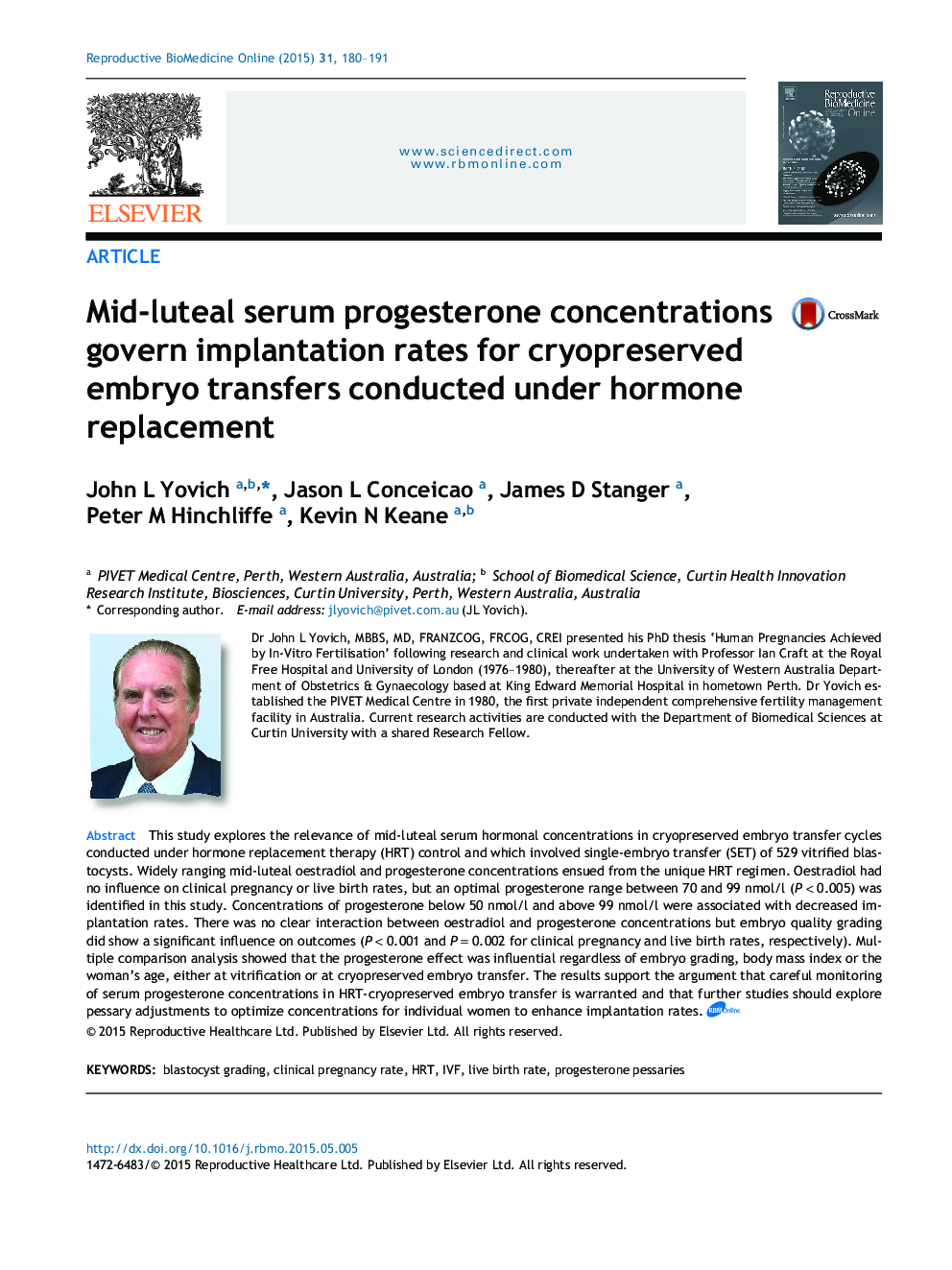| Article ID | Journal | Published Year | Pages | File Type |
|---|---|---|---|---|
| 6188744 | Reproductive BioMedicine Online | 2015 | 12 Pages |
This study explores the relevance of mid-luteal serum hormonal concentrations in cryopreserved embryo transfer cycles conducted under hormone replacement therapy (HRT) control and which involved single-embryo transfer (SET) of 529 vitrified blastocysts. Widely ranging mid-luteal oestradiol and progesterone concentrations ensued from the unique HRT regimen. Oestradiol had no influence on clinical pregnancy or live birth rates, but an optimal progesterone range between 70 and 99Â nmol/l (P < 0.005) was identified in this study. Concentrations of progesterone below 50Â nmol/l and above 99Â nmol/l were associated with decreased implantation rates. There was no clear interaction between oestradiol and progesterone concentrations but embryo quality grading did show a significant influence on outcomes (P < 0.001 and P = 0.002 for clinical pregnancy and live birth rates, respectively). Multiple comparison analysis showed that the progesterone effect was influential regardless of embryo grading, body mass index or the woman's age, either at vitrification or at cryopreserved embryo transfer. The results support the argument that careful monitoring of serum progesterone concentrations in HRT-cryopreserved embryo transfer is warranted and that further studies should explore pessary adjustments to optimize concentrations for individual women to enhance implantation rates.
